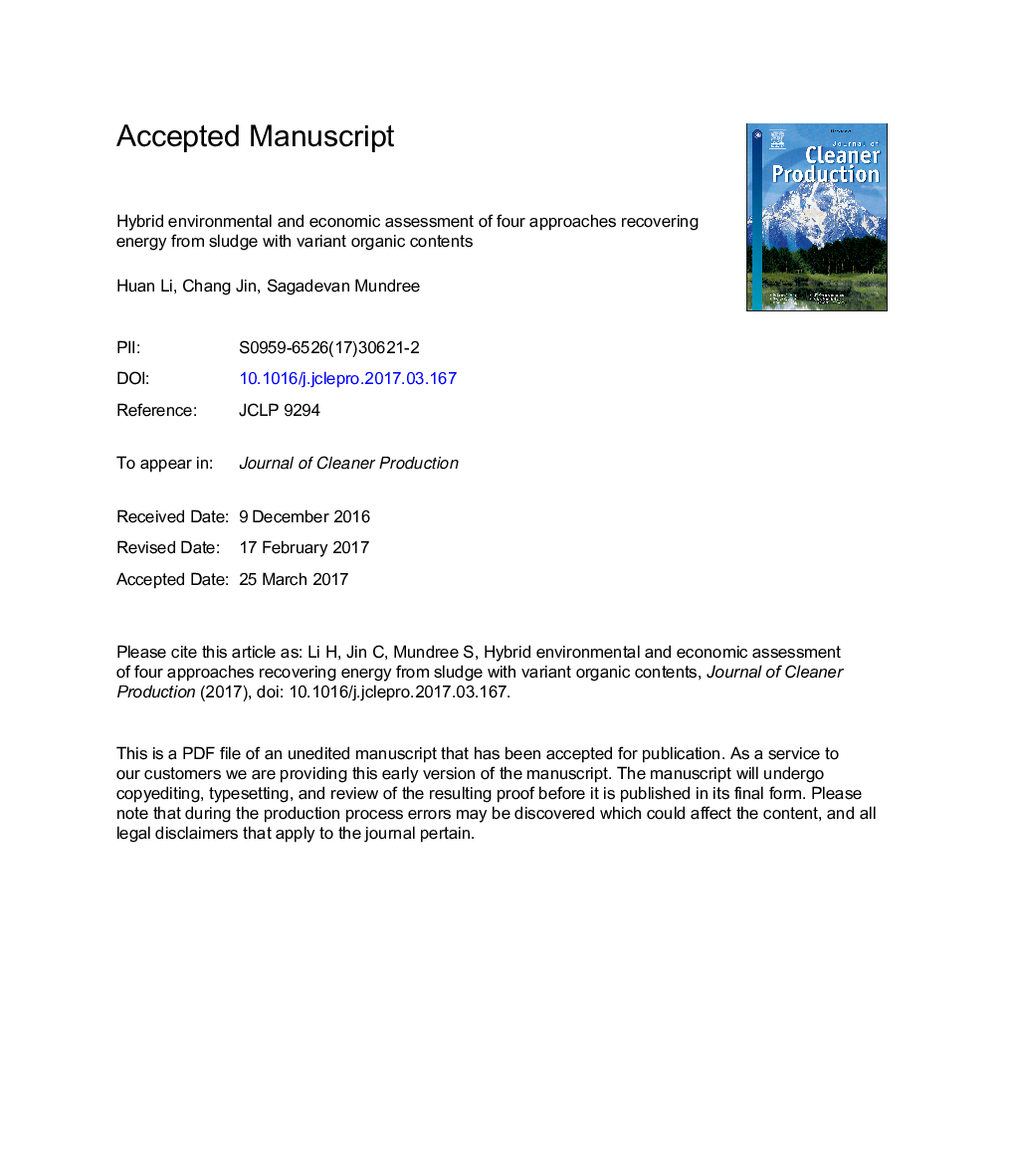| Article ID | Journal | Published Year | Pages | File Type |
|---|---|---|---|---|
| 5479627 | Journal of Cleaner Production | 2017 | 34 Pages |
Abstract
Anaerobic digestion (AD), specific incineration (INC), co-incineration in coal-fired power plants (CINP) and co-incineration in cement kilns (CINC) are the four common approaches recovering energy from sludge in South China, where low-organic-content sludge is an important issue influencing the performance of the four approaches. In this study, the four approaches are assessed from the aspects of environmental impacts, energy efficiency and economic performance (3E), and the influence of sludge organic content on the results is particularly paid attention to. When sludge organic content decreases from 70% to 40%, the total environmental impacts of the four approaches change slightly by 1.6-7.1%, but their energy efficiencies decreases by 43-66% and their net present values decrease 24-317% for a project with treatment capability of 100 tons of sludge solids per day. AD has the best energy efficiency and economic performance, but its environmental burden derived from heavy metals spread on land is the heaviest. CINC has the least environment impact, and its energy efficiency and economic performance are both close to AD. Hence, both AD and CINC are good choices for the treatment of high-organic-content sludge, but CINC show advantage over AD when dealing with low-organic-content sludge. The findings will help guide decisions about sludge handling for existing wastewater treatment plants and those that are still in the planning phase in South China.
Related Topics
Physical Sciences and Engineering
Energy
Renewable Energy, Sustainability and the Environment
Authors
Huan Li, Chang Jin, Sagadevan Mundree,
